Introduction
Even the most accurate load cell will fail to perform if it’s not mounted correctly.
In fact, improper installation is the #1 reason for unreliable, unstable, or inaccurate weighing system performance.
This article highlights the most common load cell mounting errors, their effects on measurement accuracy, and how to avoid or correct them.
1. Why Mounting Matters
Load cells are designed to work under very specific loading conditions:
Axial force
No lateral or off-center load
Fixed and stable support surface
Any deviation can introduce errors far beyond the rated tolerance—sometimes more than 5–10 times the rated error limits.
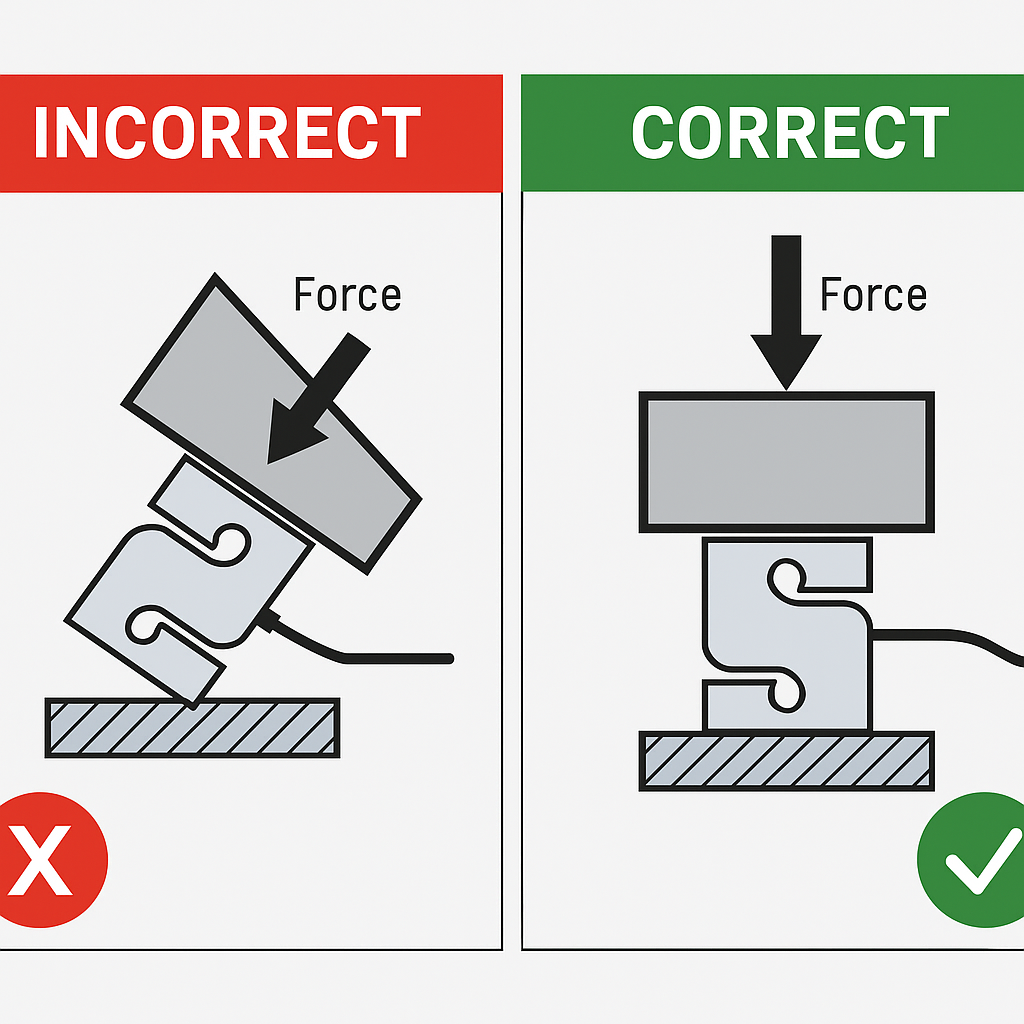
2. Common Load Cell Mounting Errors
🔻 A. Off-Center Loading
The applied force doesn’t go through the load cell’s central axis.
Effect:
Uneven strain distribution
Readings become inconsistent and non-repeatable
May increase hysteresis and non-linearity
Fix:
Use load alignment fixtures or spherical washers
Employ guided load introduction platforms
⚙️ B. Twisting or Torque
Torque applied to the sensor via loading platform or misalignment.
Effect:
Structural distortion
Permanent mechanical damage or offset shift
Fix:
Use anti-twist mechanisms or decoupling mounts
Ensure free rotation or mechanical isolation
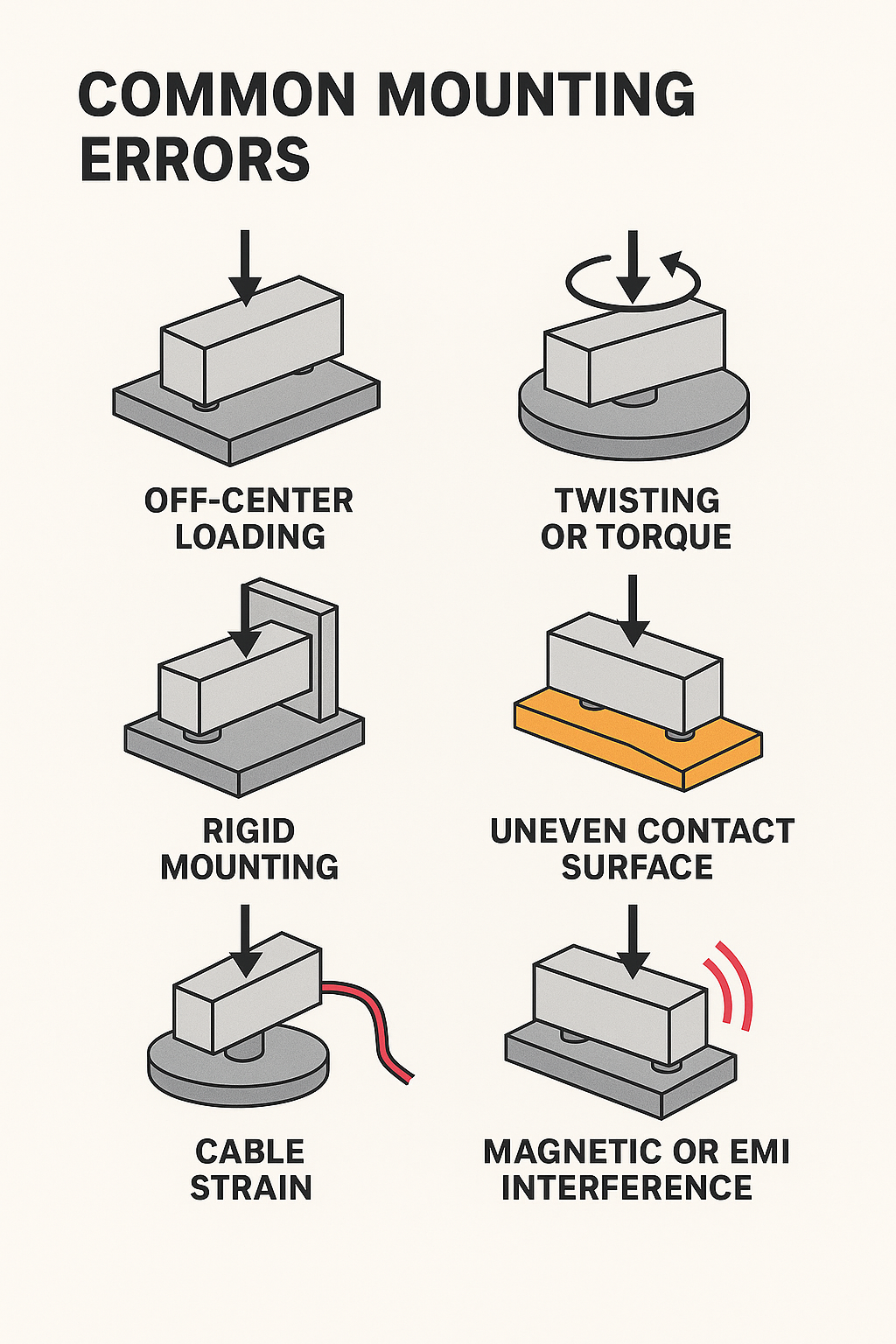
🧱 C. Rigid Mounting (No Floating Point)
Fixed mountings don’t allow natural expansion or contraction.
Effect:
Mechanical binding
Zero drift and instability with temperature
Fix:
Use manufacturer-recommended mounting kits
Allow horizontal freedom where needed (e.g., sliding bearings)
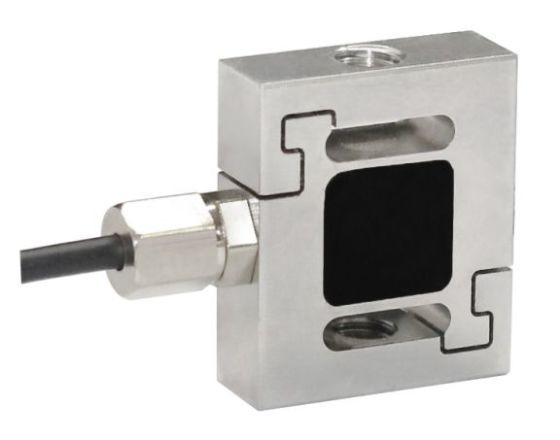
🔄 D. Uneven Contact Surface
Load cell not mounted on a flat, level, or clean base.
Effect:
Stress concentrations
Non-repeatable signals or early fatigue
Fix:
Always check surface flatness and use shims if necessary
Clean mounting area before installation
🔌 E. Cable Strain
Load cell cable is stretched, bent sharply, or tied too tightly.
Effect:
Signal interference or permanent damage
Moisture ingress or short circuits
Fix:
Use strain relief loops
Avoid cable pulls; route away from high-vibration areas
🧲 F. Magnetic or EMI Interference
Mounting near high-power cables or transformers
Effect:
Noisy signals, unstable output, or false triggering
Fix:
Route load cell cables separately
Use shielded cables and proper grounding
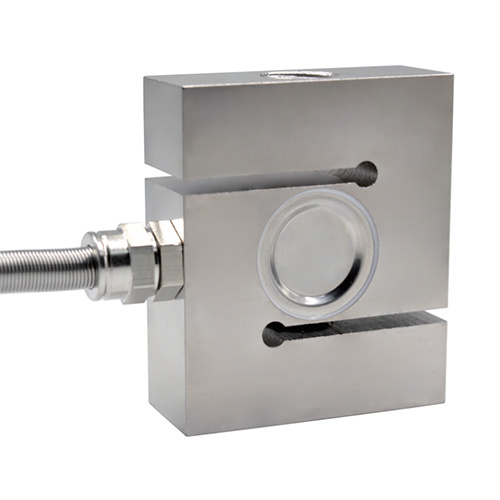
3. Symptoms of Improper Mounting
If you observe any of the following issues after installation, suspect a mounting problem:
| Symptom | Likely Cause |
|---|---|
| Fluctuating or unstable readings | EMI, cable strain, surface error |
| Inconsistent results between loads | Off-center force, mounting angle |
| No return to zero | Friction, thermal stress, binding |
| Drifting over time | Rigid mount, surface movement |
| High hysteresis or non-linearity | Torque or bending moment |
4. Best Practices for Load Cell Mounting
✅ Follow manufacturer’s mounting instructions
✅ Use alignment guides, spherical load buttons, or self-aligning feet
✅ Ensure load introduction is vertical and centered
✅ Use floating/flexible mounts for tanks or silos
✅ Isolate from vibrations, shocks, and lateral loads
✅ Always test and verify after installation (zero/load/release cycle)
5. Use Mounting Kits When Possible
Many load cell manufacturers offer dedicated mounting assemblies, such as:
Rocker pin or pendulum mounts
Compression mounts with centering rings
Tension adapters with rod ends or clevises
Using these kits:
Reduces installation errors
Improves repeatability
Increases safety and load alignment
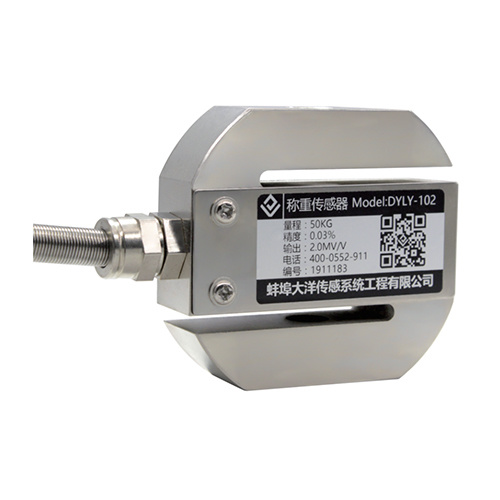
Conclusion
Mounting is not just a mechanical task—it’s part of your measurement system.
Poor installation can turn a high-precision sensor into a source of failure.
By avoiding these common mistakes and using proper mounting strategies, you can ensure your load cell performs as specified for years to come.
🛠️ Good sensor, bad mount = bad results.
✅ Good sensor + good mount = trusted measurement.
